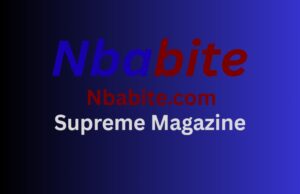
Doge Software Licenses Audit HUD
In today’s digital economy, organizations manage thousands of software licenses across multiple systems, vendors, and platforms. Keeping track of every license, renewal, and compliance rule has become a complex challenge. This is where the Doge Software Licenses Audit HUD comes into play. It’s not just a tool—it’s a comprehensive system that helps businesses and government agencies monitor, audit, and optimize software licensing in real time.
By combining advanced auditing mechanisms with a heads-up display (HUD) interface, the Doge Software Licenses Audit HUD simplifies the process of tracking licenses, identifying waste, and ensuring compliance with legal and financial standards. Whether you’re in the private sector or managing a public institution, this approach helps you gain visibility and control over one of the most overlooked yet expensive assets—software licenses.
Understanding the Concept of Doge Software Licenses Audit HUD
The term doge software licenses audit hud refers to a structured auditing and monitoring system that integrates both automation and visual intelligence. “Doge” represents a governance or efficiency initiative, “software licenses audit” highlights its focus on compliance and resource optimization, and “HUD” stands for a real-time heads-up display that provides actionable insights.
Unlike traditional manual audits, the Doge Software Licenses Audit HUD continuously collects data about software deployment and usage across networks. It analyzes license consumption, identifies inactive or duplicate licenses, and offers detailed metrics on utilization rates. The HUD interface visually presents this data through dashboards, graphs, and alerts so decision-makers can act quickly.
This system eliminates the blind spots in license management by showing exactly what software is being used, where, by whom, and at what cost. In large organizations, such transparency is invaluable for reducing waste, managing budgets, and avoiding compliance penalties.
Core Purpose and Mission of the Audit HUD
The primary goal of the Doge Software Licenses Audit HUD is to bring transparency, accountability, and efficiency to software asset management. Many organizations purchase licenses in bulk but fail to track whether they are being used efficiently. Over time, this leads to waste, unnecessary renewals, and budget losses.
The audit HUD ensures that every license purchased has a purpose and that any unused or underutilized license is flagged for review. Beyond saving costs, it also ensures that every software application complies with licensing laws—an essential factor in avoiding legal or contractual violations.
Essentially, the system operates as an ongoing audit mechanism rather than a one-time check. Its dynamic, data-driven nature makes it adaptable to new software, licensing models, and enterprise growth.
How the Doge Software Licenses Audit HUD Works
The doge software licenses audit hud system functions through a combination of automation, analytics, and visual intelligence. Here’s a breakdown of its workflow:
- License Discovery – The system automatically scans all company devices, servers, and cloud systems to identify installed software and active licenses.
- Classification – It categorizes licenses by vendor, type (open-source, subscription-based, or perpetual), and user allocation.
- Usage Monitoring – Advanced analytics track usage frequency, login activity, and application run times to determine which licenses are truly active.
- Compliance Assessment – It cross-checks current usage against licensing terms to identify violations or unlicensed installations.
- Visualization (HUD) – The heads-up display presents real-time data, graphs, alerts, and compliance scores that make the audit results easy to interpret.
- Optimization – Recommendations are provided for reclaiming unused licenses, reducing redundant tools, and negotiating better vendor contracts.
This real-time loop ensures that software licensing remains under control without waiting for year-end audits or vendor reviews. It creates a culture of proactive compliance and cost efficiency.
Key Features of the Doge Software Licenses Audit HUD
The strength of this system lies in its multifaceted functionality. Some of the most impactful features include:
- Comprehensive License Inventory – Tracks every license purchased, installed, or activated across the organization.
- Usage Analytics – Identifies idle, duplicate, or outdated licenses to minimize waste.
- Compliance Scoring System – Provides a real-time compliance rating for every department or business unit.
- HUD Interface – Displays key data points in an intuitive visual dashboard accessible to auditors, IT managers, and executives.
- Automated Alerts – Sends notifications for expired, unused, or misallocated licenses.
- Financial Tracking – Calculates total licensing costs, potential savings, and projected renewal budgets.
- Integration Support – Works with enterprise systems, procurement platforms, and cloud services for end-to-end coverage.
Each of these features contributes to a smarter and more efficient approach to software governance.
Benefits of Implementing the Doge Software Licenses Audit HUD
Organizations implementing this system experience significant advantages that extend beyond financial savings. The key benefits include:
- Cost Reduction: Identifying and reclaiming unused licenses prevents overspending and unnecessary renewals.
- Audit Readiness: Maintaining up-to-date records ensures readiness for internal or external software audits at any time.
- Legal Protection: Reduces the risk of licensing violations, legal disputes, and penalties.
- Transparency: Provides clear visibility into software usage across departments, regions, or teams.
- Operational Efficiency: Simplifies IT asset management by replacing manual tracking with automated oversight.
- Strategic Decision-Making: Supports data-driven purchasing and vendor negotiations by showing true software demand and usage trends.
These benefits make the doge software licenses audit hud not only a compliance tool but also a financial and strategic advantage for any organization.
Practical Use Case: Large-Scale Agency License Audit
Government agencies and large enterprises often manage tens of thousands of software licenses. Without a system like the Doge Software Licenses Audit HUD, these licenses can easily become untraceable.
In one example, a federal department discovered through an audit dashboard that it had thousands of unused licenses for productivity and workflow software. The HUD visualization revealed massive inefficiencies—licenses purchased but never activated or assigned. This insight led to immediate cost recovery, vendor renegotiations, and streamlined procurement processes.
This scenario underscores how vital a real-time license HUD can be for transparency and accountability, especially in large organizations managing extensive software ecosystems.
Challenges in License Management Before Audit HUD
Before tools like the doge software licenses audit hud, software license management relied on static spreadsheets and manual reports. This approach created several problems:
- Lack of Visibility: IT departments couldn’t accurately determine license utilization or expiration dates.
- Compliance Gaps: Untracked licenses led to unintentional violations of vendor agreements.
- Financial Waste: Organizations paid for redundant or idle licenses year after year.
- Inefficient Renewals: Renewal decisions were often made without real data, leading to over-licensing.
- Poor Accountability: Without transparent reporting, departments could hoard licenses without justification.
The HUD model solves these pain points by providing centralized visibility, real-time metrics, and automated alerts.
How the HUD Interface Enhances Oversight
The “HUD” or heads-up display is the most transformative element of the doge software licenses audit hud system. Instead of dealing with spreadsheets or fragmented reports, IT and compliance officers get a single, live dashboard that summarizes everything.
It visually represents key performance indicators such as total licenses, active usage, idle count, compliance rate, and financial exposure. The color-coded visuals make it easy to identify risks, cost leaks, and potential violations at a glance.
This instant feedback loop enables organizations to act fast — reclaim unused licenses, cut costs, or fix compliance gaps before they escalate into legal or financial problems. In short, the HUD converts license management data into a live operational control center.
Adoption Best Practices
Implementing the Doge Software Licenses Audit HUD effectively requires clear planning and coordination. The following best practices ensure success:
- Establish Ownership: Assign dedicated responsibility for license management across IT, finance, and legal teams.
- Define Audit Policies: Set compliance rules, usage thresholds, and renewal guidelines in advance.
- Integrate Systems: Connect the HUD with asset management, procurement, and HR databases.
- Automate Alerts: Use intelligent notifications to flag anomalies immediately.
- Train Users: Ensure staff understand license policies and the impact of unused or unauthorized installations.
- Review Regularly: Conduct periodic reviews of license data to adjust policies and vendor contracts.
These steps help organizations achieve full value from their audit HUD investment.
The Future of Software License Auditing
As organizations embrace cloud and subscription-based software, the need for systems like the doge software licenses audit hud will only increase. Future iterations are expected to include AI-driven forecasting, predictive usage modeling, and deeper integrations with cybersecurity frameworks.
Artificial intelligence will help identify not only unused licenses but also predict when certain licenses are likely to become redundant. Predictive analytics could warn when costs are about to spike, allowing teams to adjust before renewals occur. Blockchain-based license tracking may also emerge, offering immutable audit trails for compliance verification.
Ultimately, the future belongs to automated, data-driven license governance, and the Doge Software Licenses Audit HUD is a major step in that direction.
Conclusion
The Doge Software Licenses Audit HUD represents a powerful evolution in license management and compliance oversight. It transforms static data into live intelligence, giving organizations the ability to control, optimize, and justify every software purchase. With real-time visualization, cost tracking, and automated compliance checks, it eliminates the guesswork that once plagued IT departments and procurement teams.
By adopting the doge software licenses audit hud, companies and government bodies alike can save substantial costs, strengthen legal compliance, and bring transparency to one of their most overlooked expense areas. In a world where digital efficiency defines competitive advantage, such tools are not optional—they’re essential.
FAQs
Q1: What does the Doge Software Licenses Audit HUD do?
It monitors, audits, and displays real-time data about software licenses, helping organizations maintain compliance and reduce waste.
Q2: Why is software license auditing important?
It ensures legal compliance, prevents financial waste, and gives organizations full visibility into software usage.
Q3: Who uses the Doge Software Licenses Audit?
Enterprises, government agencies, and IT departments use it to optimize license management and improve governance.
Q4: Does the HUD replace manual audits?
Yes, it automates and visualizes the audit process, turning license tracking into a continuous operation rather than a periodic task.
Q5: What are the main benefits?
Cost savings, compliance assurance, real-time visibility, and data-driven decision-making.






